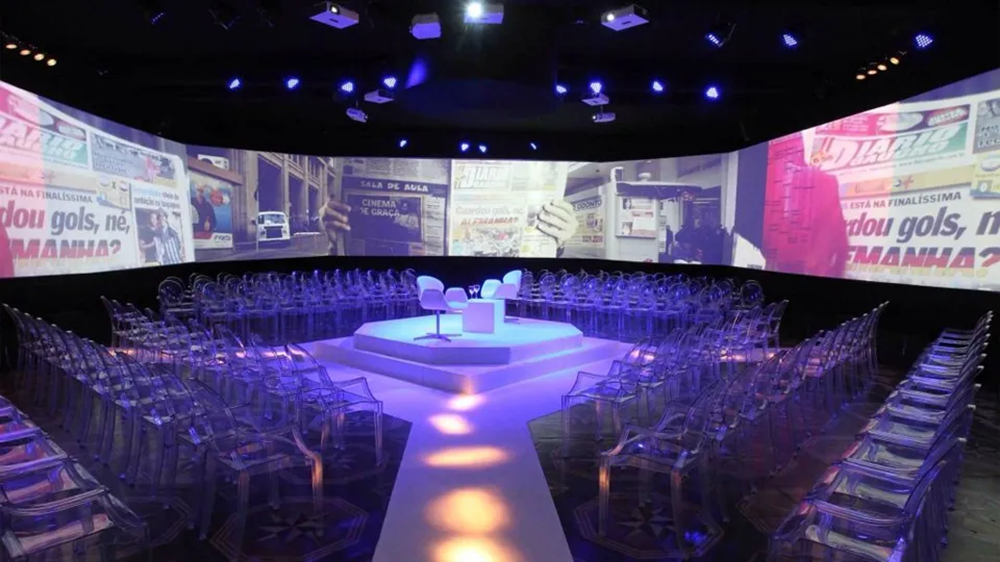LED displays have come a long way from their beginnings as simple scoreboards and message boards. Today, creative LED displays are transforming spaces and experiences with dynamic visuals, interactivity, and cutting-edge technology. This article explores what makes creative LED displays unique, the possibilities they offer, and tips for designing inspiring LED projects.
What is a Creative LED Display?
A creative LED display goes beyond simply showing information—it captivates audiences through imaginative visuals and interactive features. While traditional LED signage may only show text, numbers, or basic graphics, creative LED displays leverage:
-
Innovative shapes and configurations – Creative LEDs can take on any form, such as waves, spheres, or unique grids, instead of just rectangular screens.
-
Dynamic motion and effects – Advanced LEDs can display animated images, transitions, and multimedia content, blending animation, video, and special effects.
-
Interactivity – Modern LEDs can respond to sound, motion, or touch, creating immersive, customizable experiences.
-
Generative real-time content – Displays can show software-generated visuals, such as rippling water effects, that evolve and respond dynamically in real time.
The main goal is to create engaging, artistic visuals that draw attention and resonate with viewers. When the display itself needs to be the artistic centerpiece, creative LEDs are the ideal choice.
How Creative LEDs Differ from Traditional LED Signage
Traditional LED signage has more limited functions:
-
Basic design – Most use simple rectangular shapes to display text and numbers.
-
Static content – Displays show pre-programmed or streamed messages and graphics without movement or variation.
-
Single color – Early LEDs emitted only one color, usually red, with later versions offering basic multicolor capability.
-
Lower resolution – Traditional LEDs have a lower pixel density, limiting image quality.
-
No interactivity – Displays cannot respond or interact with viewers.
Creative LED displays, with advanced technology and an emphasis on artistry, open up far greater possibilities—limited only by the designer’s imagination and budget.
Types of Creative LED Displays
-
Generative LED – Produces constantly changing, software-generated visuals like water ripples, spinning particles, or blooming flowers, never repeating exactly.
-
Interactive LED – Responds to human activity, such as movement, touch, or sound, with content changing based on user position or audio input.
-
3D Volumetric LED – Uses three-dimensional pixel arrangements to create floating 3D images, offering a hologram-like experience.
-
Flexible and Transparent LED – Made with advanced materials to bend around structures or hang like fabric, while transparent LEDs overlay visuals onto real objects behind them.
-
Multimedia LED – High-resolution LED walls integrating video, animation, graphics, and even websites for complex, large-scale storytelling or entertainment.
Creative Applications of LED Displays
-
Retail – Interactive LEDs attract customers, generative LEDs set the mood, and storefront LEDs become striking displays.
-
Events – LED stages, interactive floors, and volumetric LEDs deliver immersive experiences at concerts, festivals, and corporate gatherings.
-
Architecture – LED media facades turn buildings into dynamic canvases for generative art or information displays.
-
Museums – Creative LEDs enhance storytelling with interactive exhibits and multimedia imagery.
-
Brand Experiences – 3D LED displays create photogenic moments, while LED floors and projections encourage social sharing.
-
Science & Engineering – Transparent and flexible LEDs enable interactive simulations of weather patterns, molecular structures, and more.
The applications are endless—if it can be digitally displayed, it can be brought to life through creative LED design.
Tips for Innovative LED Design
-
Break away from standard screens—explore spheres, tunnels, and irregular shapes.
-
Add interactivity with sensors, cameras, and multi-touch technology, responding to sound, motion, and gestures.
-
Use generative content inspired by nature, evolving over time.
-
Incorporate multi-angle and 3D designs to enhance depth, layering transparent LED panels for extra dimension.
-
Develop content and animations tailored to the LED wall specific size, shape, and resolution.
-
Design with accessibility, maintenance, and future upgrades in mind.
-
Consider how lighting, materials, and surrounding elements impact the visual experience.
With thoughtful planning, engineering, and design, creative LED displays can deliver breathtaking, highly shareable viewing experiences—sparking inspiration and engaging audiences in entirely new ways. The future of LED innovation holds limitless possibilities.
Post time: Aug-13-2025

